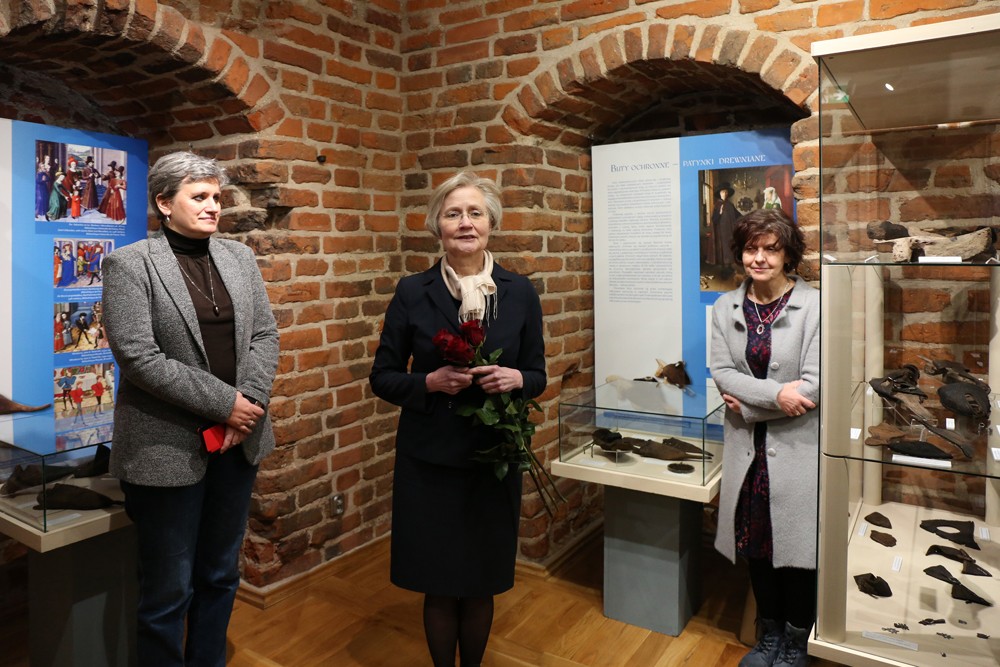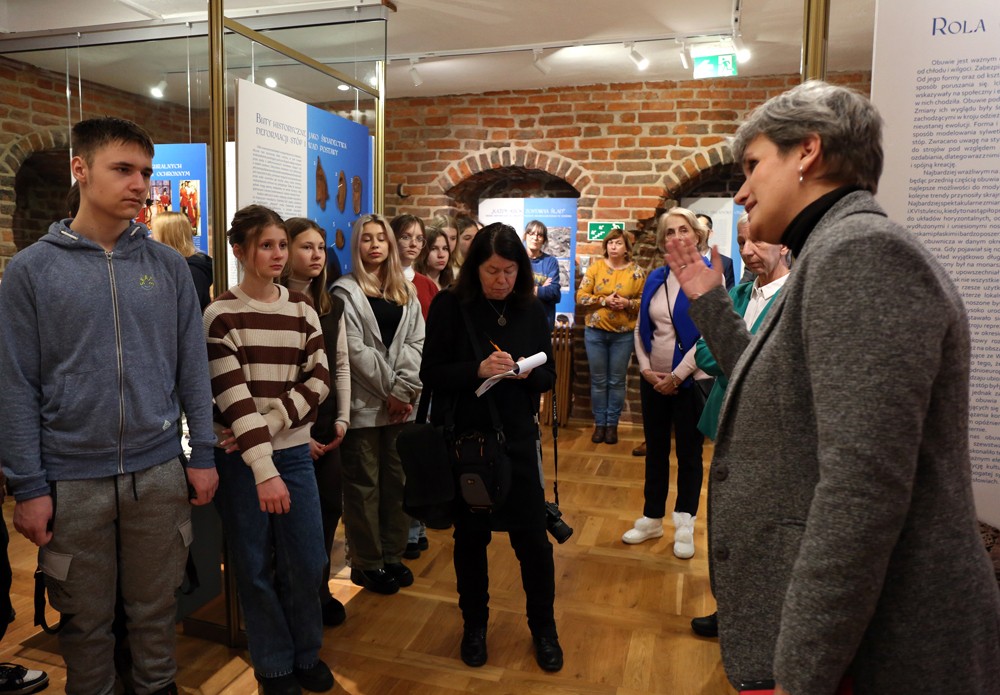
Every step leaves a mark. Historical footwear from the collection of the Archaeological Museum in Gdańsk
The new temporary exhibition features 130 objects from the rich collection of the Archaeological Museum in Gdańsk - which, next to the collection of the Museum in Dordrecht, the Netherlands, is the richest in Europe. The gothic interior of the Człuchowska Gate is home to an excellent display of shoes in which the inhabitants of Gdańsk walked the streets from the 12th to the 18th century.
The basic cut of the shoe developed as early as the 12th century and has survived to the present day. The footwear consisted of many parts, cut out of leather with special knives and sewn together with threads of hemp reinforced with wax. However, during the excavation work that has been going on for ca. However, during the 30 years of excavations in Gdańsk, archaeologists are discovering thousands of pieces of decomposed footwear, as the hemp threads decompose in the ground. Only three shoes that have survived hundreds of years in the soil in their entirety are on display. The others, after cleaning and preserving the elements, have been stitched together by conservators. The entire complex conservation process can be traced in the film on display. By admiring the children's, women's and men's shoes presented in the showcases and studying the colourful charts accompanying them, it is possible to trace how fashion, tastes and styles of shoes and the shoemaker's craft have changed, because since the Middle Ages, in addition to their basic role of protection against the cold, damp and injury, their appearance and comfort were also important. Shoes began to be decorated with metal appliqués, buckles, ribbons and even jewels, and they began to be decorated by cutting openwork patterns in the leather, pricking, stamping and embroidering. Since the streets of the time, in the absence of pavements, were often covered with mud and dirt, in order not to damage the footwear, patinas were invented, i.e. protective shoes on wooden, sometimes very high heels, shown in various variations in the exhibition. Fashionable does not always mean comfortable, one can tell by looking at poulaine shoes (originating in Poland), i.e. shoes with long, very narrow noses stuffed with moss, or Tudor so-called horned shoes - shallow, with a very wide square (horned) or rounded front. The length of the noses depended on the wealth of the owner and increased with social status, reaching up to fifty centimetres.
The exhibition also features mules, i.e. shoes on a cork base, covered with leather. The exhibition is complemented by the presentation of additional elements attached to shoes, such as iron crampons for walking on ice, bone skates, leather butterflies for supporting spurs on the heel, iron horseshoes attached to men's heels which appeared in shoes at the end of the 16th century, as well as equipment of a shoemaker's workshop. An undoubted attraction is an opportunity to try on reconstructions of sticks, as well as to have a close look at leather copies of medieval footwear used in a shoemaker's workshop.
Exhibition scenario: Beata Ceynowa, Archaeological Museum in Gdańsk
Curator: Hanna Rząska, Chojnice Historical and Ethnographic Museum



